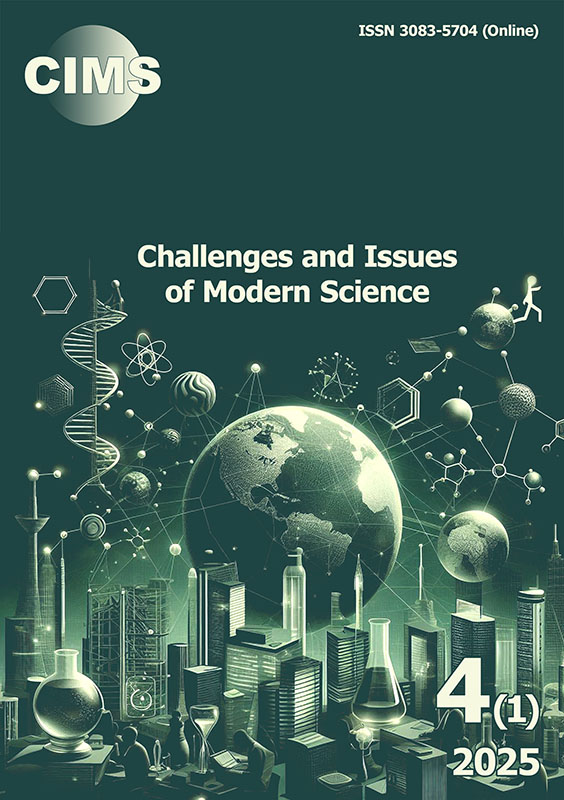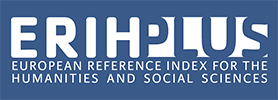Economic growth of countries in the context of military operations
DOI:
https://doi.org/10.15421/cims.4.288Keywords:
growth, military conflicts, growth models, machine learning, international aidAbstract
Purpose. The purpose of the study is to assess the economic growth of Ukraine, Syria, and Palestine under wartime conditions, compare growth models (Solow, MRW, Romer, and a machine learning model), identify recovery factors, and develop recommendations for 2030. Design / Method / Approach. The study employs a comparative analysis of growth models, modified by a conflict intensity indicator, based on panel data from 1990–2023 (World Bank, UNESCO, IndexMundi). Random Forest, accounting for nonlinear relationships among variables (investments, education, R&D, international aid), was used for forecasting. Forecasts cover three scenarios for 2025–2030. Findings. The Romer model is the most accurate for Ukraine, projecting a GDP per capita of $13,456 (optimistic scenario, 2030). For Syria and Palestine, projections are $1,183 and $3,012, respectively. Random Forest predicts $23,792 for Ukraine, $6,819 for Syria, and $5,764 for Palestine. Key factors include international aid (29.8%), investments (24.6%), and conflict reduction (19.7%). Theoretical Implications. The study adapts growth models to wartime conditions, highlighting the advantages of endogenous models and machine learning for analyzing complex economies. Practical Implications. The findings contribute to developing recovery strategies, allocating international aid, and planning sustainable development in conflict-affected countries. Originality / Value. The originality lies in adapting models to wartime conditions, comparing their effectiveness, and applying Random Forest for forecasting. Research Limitations / Future Research. Limitations include a small sample size (72 observations), missing data, subjective assumptions, and omission of external shocks. Future research should incorporate broader data, climate, and geopolitical factors. Type of Article. Empirical.
Downloads
References
Amare, M. Z., Demissie, W. M., & Massa, M. M. (2025). Technical efficiency analysis of African economic growth: Panel stochastic frontier model approach. Scientific African, 28, e02648. https://doi.org/10.1016/j.sciaf.2025.e02648
Bloom, N., Jones, C. I., Van Reenen, J., & Webb, M. (2020). Are Ideas Getting Harder to Find? American Economic Review, 110(4), 1104–1144. https://doi.org/10.1257/aer.20180338
Carvalho Marques, M. de, Mohamed, A. A., & Feitosa, P. (2025). Sustainable development goal 6 monitoring through statistical machine learning – Random Forest method. Cleaner Production Letters, 8, 100088. https://doi.org/10.1016/j.clpl.2024.100088
Cobb, C. W., & Douglas, P. H. (1928). A theory of production. American Economic Review, 18(1), 139–165. https://www.jstor.org/stable/1811556
Comin, D., & Mestieri, M. (2014). Technology diffusion: Measurement, causes, and consequences. In P. Aghion & S. N. Durlauf (Eds.), Handbook of economic growth (Vol. 2, pp. 565–622). Elsevier. https://doi.org/10.1016/B978-0-444-53540-5.00002-1
Countryeconomy.com. (2024). Economic and sociodemographic information. Countryeconomy.com. https://countryeconomy.com
Domar, E. D. (1946). Capital expansion, rate of growth, and employment. Econometrica, 14(2), 137–147. https://www.jstor.org/stable/1905364
Gómez, M. A. (2025). Factor substitution and economic growth in a Romer-type model with monopolistic competition. Journal of Mathematical Economics, 117, 103086. https://doi.org/10.1016/j.jmateco.2025.103086
Harrod, R. F. (1939). An essay in dynamic theory. Economic Journal, 49(193), 14–33. https://www.jstor.org/stable/2225181
Huang, X., Dong, J., & Li, X. (2025). Fintech, technological innovation and regional economic growth: Theoretical modeling and empirical evidence. China Economic Review, 91, 102397. https://doi.org/10.1016/j.chieco.2025.102397
IndexMundi. (2024). Country facts. IndexMundi. https://www.indexmundi.com
Macrotrends LLC. (2024). The long term perspective on markets. Macrotrends. https://www.macrotrends.net
Mankiw, N. G., Romer, D., & Weil, D. N. (1992). A contribution to the empirics of economic growth. Quarterly Journal of Economics, 107(2), 407–437. https://www.jstor.org/stable/2118477
Nordhaus, W. (2021). Dynamic climate clubs: On the effectiveness of incentives in global climate agreements. Proceedings of the National Academy of Sciences, 118(45), e2109988118. https://doi.org/10.1073/pnas.2109988118
Ochi, A., & Saidi, A. (2024). Impact of governance quality, population and economic growth on greenhouse gas emissions: An analysis based on a panel VAR model. Journal of Environmental Management, 370, 122613. https://doi.org/10.1016/j.jenvman.2024.122613
Odunsi, O. M., & Rienow, A. (2025). Examining urban expansion in Abeokuta through the lens of its economic development cluster: A geospatial approach utilising Random Forest and Batty’s entropy. Geomatica, 77(1), 100050. https://doi.org/10.1016/j.geomat.2025.100050
Petrović, P. (2023). Climate change and economic growth: Plug-in model averaging approach. Journal of Cleaner Production, 433, 139766. https://doi.org/10.1016/j.jclepro.2023.139766
Ramsey, F. P. (1928). A mathematical theory of saving. Economic Journal, 38(152), 543–559. https://www.jstor.org/stable/2224098
Romer, P. M. (1990). Endogenous technological change. Journal of Political Economy, 98(5, Pt. 2), S71–S102. https://www.jstor.org/stable/2937632
Shalaby, A. (2024). Leveraging the digital sustainable growth model (DSGM) to drive economic growth: Transforming innovation uncertainty into scalable technology. Journal of Economy and Technology, 2, 310–321. https://doi.org/10.1016/j.ject.2024.09.003
Smets, F., & Wouters, R. (2007). Shocks and frictions in US business cycles: A Bayesian DSGE approach. American Economic Review, 97(3), 586–606. https://www.jstor.org/stable/30035022
Solow, R. M. (1956). A contribution to the theory of economic growth. Quarterly Journal of Economics, 70(1), 65–94. https://www.jstor.org/stable/1884513
Stern, N., & Taylor, C. (2007). Economics: Climate change, risk, ethics, and the Stern Review. Science, 317(5835), 203–204. https://doi.org/10.1126/science.1142920
Trading Economics. (2024). 20 million indicators from 196 countries. Trading Economics. https://tradingeconomics.com
UNESCO Institute for Statistics. (2024). Data for the Sustainable Development Goals. UNESCO UIS. https://uis.unesco.org
Wan, B. (2024). The Impact of Cultural Capital on Economic Growth Based on Green Low-Carbon Endogenous Economic Growth Model. Sustainability, 16(5), 1781. https://doi.org/10.3390/su16051781
World Bank Group. (2024). International development, poverty, and sustainability. World Bank Group. https://www.worldbank.org/ext/en/home
Yu, T.-K., Chang, I.-C., Chen, S.-D., Chen, H.-L., & Yu, T.-Y. (2025). Predicting potential soil and groundwater contamination risks from gas stations using three machine learning models (XGBoost, LightGBM, and Random Forest). Process Safety and Environmental Protection, 188, 107249. https://doi.org/10.1016/j.psep.2025.107249
Downloads
Published
Versions
- 2025-06-24 (2)
- 2025-05-29 (1)
Issue
Section
Categories
License
Copyright (c) 2025 Olexandr Shapurov, Oleksii Hrechanyi, Volodymyr Stoiev, Anatolii Karpelianskyi, Alina Sosnovska (Author)

This work is licensed under a Creative Commons Attribution 4.0 International License.
All articles published in the journal Challenges and Issues of Modern Science are licensed under the Creative Commons Attribution 4.0 International (CC BY) license. This means that you are free to:
- Share, copy, and redistribute the article in any medium or format
- Adapt, remix, transform, and build upon the article
as long as you provide appropriate credit to the original work, include the authors' names, article title, journal name, and indicate that the work is licensed under CC BY. Any use of the material should not imply endorsement by the authors or the journal.



















